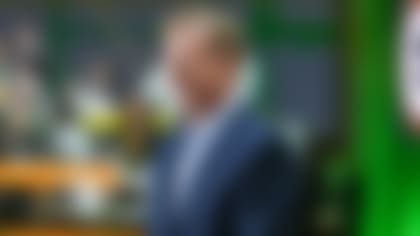MIAMI -- South Florida is ready for the Super Bowl party to begin.
The Indianapolis Colts and New Orleans Saints punched their tickets Sunday to the tropical playland, and though the game isn't until Feb. 7, Miami officials don't want revelers to wait.
"The last time I looked outside, all the hoteliers were dancing in the street," said Rodney Barreto, chairman of the South Florida Super Bowl Host Committee. "This is going to be a big shot in our arm. And it couldn't have come at a better time."
The city has changed in the three years since the last Super Bowl was held here because of massive job losses, historically high home foreclosures and fortunes lost.
But partygoers need not worry.
Miami remains an escape, still offering dependable sun and sand, barely dressed women crowding beaches and dance floors and an international flavor all its own.
"I'm looking out the window at Biscayne Bay and we see a sailboat and we see cruise ships in the port, we're looking at hotels with people by the pool," said Bill Talbert, head of the Greater Miami Convention and Visitors Bureau. "At the end of the day, for the Super Bowl, bottom line is it's warm here and it's cold there."
There's a reason the game is coming to town for a record 10th time. It's a reliably good time. But Miami has faced some tough times during its three-year Super Bowl hiatus:
» The real estate boom was in full swing last time. This time, streets are lined in for sale signs, home prices are down by almost half from their peak, and the foreclosure rate has multiplied by nearly six.
» The unemployment rate was at 3.6 percent two months before the last Super Bowl here. Three years later, it was nearly triple.
» Last time the game was here, heads were bowed for a moment of silence, two days after tornadoes killed 20 people in central Florida and destroyed hundreds of homes. Now the earthquake in Haiti is fresh on residents' minds.
» The Orange Bowl is gone. A new Marlins stadium is one of the only big things being built. And the site of the 2008 Super Bowl, Dolphins Stadium? Well, that became Land Shark Stadium. Until this week, when it was renamed again, as Sun Life Stadium.
Talbert says Miami stands up to the great cities of the world, mentioning it in the same breath as Paris, Rome, Tokyo and Sydney. He says the city remains a strong draw for the very same reasons people came a generation ago.
Dario Moreno agrees. The political science professor at Florida International University who writes frequently about South Florida says "Miami continues."
"It's still the beach, it's still its multiculturalism, it's still its fabulous nightlife, it's still kind of a place where people from Latin America, Europe and the Northeast come together," Moreno said.
Observers also point to the continuing draw of other Miami-area places, outside the one everyone thinks of: South Beach. Fort Lauderdale has drawn some visitors northward and development elsewhere in Miami has led to up-and-coming neighborhoods including the Design District, which has continued to come alive with galleries and studios, another sign of the city's growing place in the art world.
"It's a hell of a lot smarter a city than people give it credit for," said Adam Karlin, author of Lonely Planet's guidebook on Miami.
Art Basel, the annual international festival that draws people from around the world to South Beach each December, continues to grow, and a sparkling new art museum and performing arts center are in the works.
"You can no longer call Greater Miami a cultural wasteland," Talbert said. "It's now on the cutting edge of the world."
And happily the center of the football world for the next two weeks.
Copyright 2010 by The Associated Press



